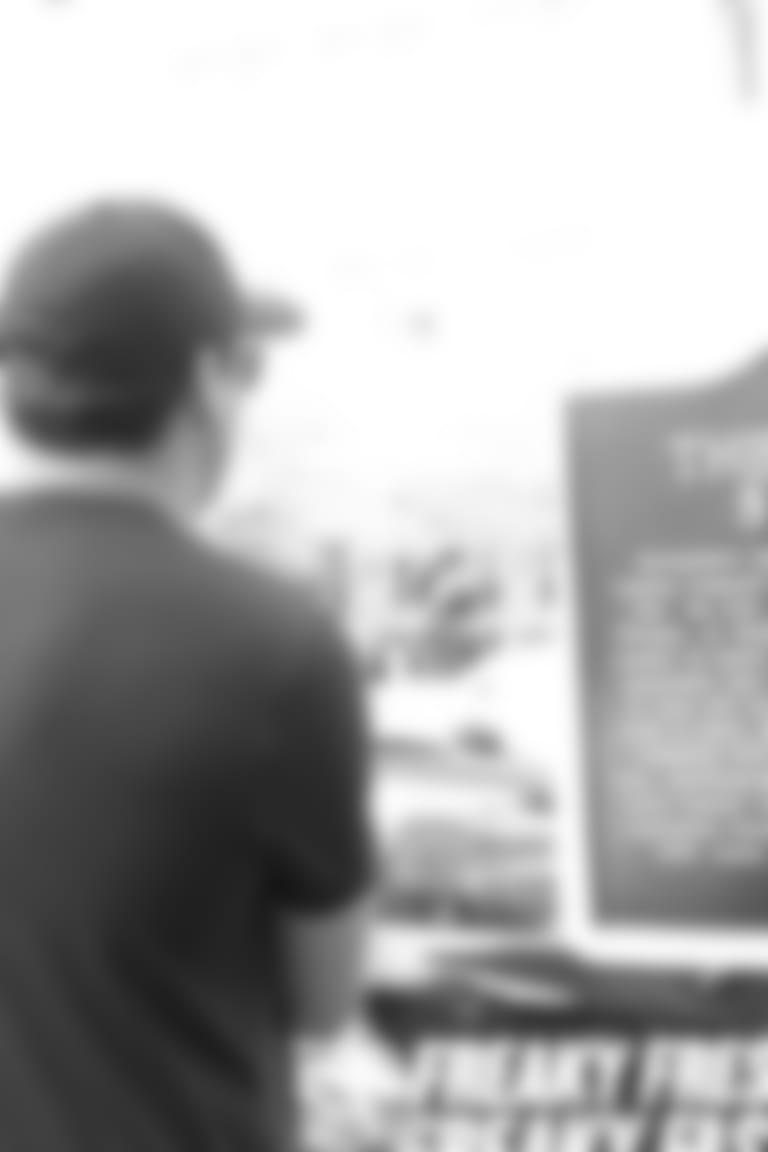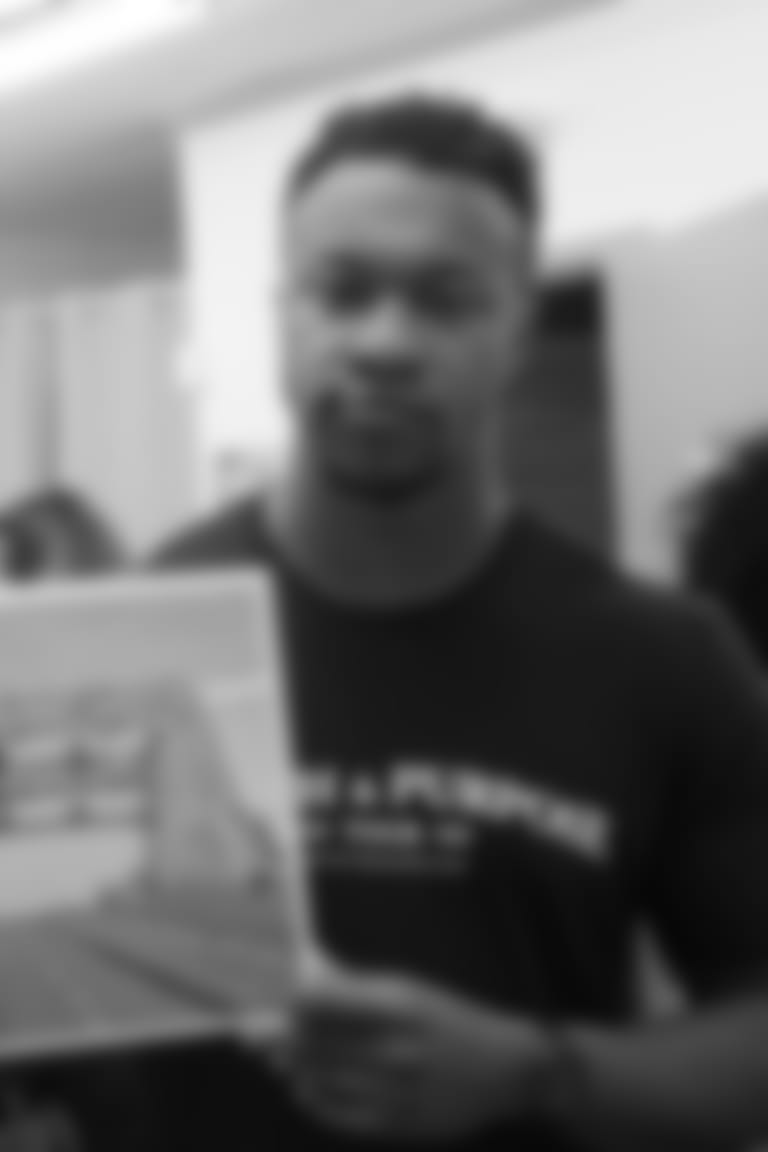Last November, members of the Seahawks organization spent the bye week on a seven-day Pilgrimage to the South through Black History with Sankofa Impact and Choose180.
Continuing the tradition in a new way, the Seahawks joined forces with the Institute of Common Power for the 2023 Truth and Purpose Tour during this year's bye week.
The Seahawks’ 2022 Pilgrimage to the South was an eye-opening experience for everyone taking part, from the busload of community activists and educators to Seahawks Legend Cliff Avril. Each stop on the tour provided a front seat to the disparities and injustices faced by people of color across the South through history.
The 2023 Truth and Purpose Tour was conducted by a completely different entity, providing a different approach to raising awareness to Black History in America while creating an environment to inspire groupthink to change the future. This is the story of a life-changing week in the South:
Months before members of the Seahawks staff set out for Atlanta for the start of the journey, the groundwork was being laid to find a group within a franchise that has committed to making change. My introduction to the group came via a Zoom call conducted by Common Power to formally get acquainted and provide context for the journey ahead. Individuals of all backgrounds passionately explained their reasoning for wanting to learn about Black history. It felt good to hear so many people of different cultures and creeds explain their purpose for facing ugly truths to find commonality and help create a better future.
The conversation would be revisited the first night of the trip upon arrival in Atlanta. The Seahawks group, led by VP of diversity, equity and inclusion Karen Wilkins-Mickey joined to break bread at Red Eye Southern Kitchen, a Southern cuisine restaurant nestled in the Hilton Atlanta Airport Hotel. We shared appetizers like smoked chicken egg rolls and fried green tomatoes while each person took turns elaborating on what they wanted to get from the trip. The willingness to be vulnerable about past experiences, or lack thereof, immediately removed the tension of speaking from the heart. Seahawks marketing coordinator Alexa Coyle discussed the contrast of diversity during her upbringing in Montana compared to the Pacific Northwest. Vice president of human resources Sarita Carter joined the journey with her husband Bryan, as they looked to use the journey to trace back to their Louisiana roots to find ways to give back. Hours went by, as the group had serious conversations about race and life, a dinner that set the precedent for the coming bonding and learning that would be necessary to work through the coming days.
Day 1: Atlanta
Morning brought the beginning of the journey, a short, chartered bus ride from the College Park area to Auburn Avenue in the heart of the city. As the group found seats and got comfortable, several representatives of Common Power prepared to join. Common Power director and award-winning Author Dr. Terry Anne Scott boarded the bus with director of field work David Domke. Scott is the author of 2022’s Lynching and Leisure: Race and the Transformation of Mob Violence in Texas and an associate professor at Hood College in Maryland. Domke is a longtime journalist and professor in the department of communication at the University of Washington. Executive director Charles Douglas III transitioned from changing diversity at Starbucks to serving as a beacon for change through Common Power. Civil rights activist and foot soldier Charles Mauldin rounded out the group, serving as a living testament to the forthcoming journey. Scott provided context on the day's events, explaining the purpose of beginning in Atlanta.
"Why Atlanta?" said Scott. "There's no more important state for politics than Georgia. It's the only state in America where one state isn't touching another that voted the same. We believe what has happened in Georgia is vital to where America is going."
In 2020, rapper T.I. referred to "America’s Blackest City" as "Wakanda," referencing the thriving African metropolis featured in Marvel's _Black Panther _series. The blue-voting city is not only surrounded by counties, but states in each direction that vote red. With the first stop of the day at the Sweet Auburn Market before a walking tour leading to Ebenezer Baptist Church and the Martin Luther King Jr. National Historical Park, the group would come to learn several ways history was changed within a one-mile radius.
The first stop of the walking tour was at Georgia State University, as Domke and Scott provided the background to how the once-segregated institution has become predominantly Black. Three women; Barbara Pace Hunt, Myra Payne Elliot and Iris Mae Welch would enlist the help of the National Association of Advancement for Colored People (NAACP) to sue the university in 1956 for exclusion.
More than five decades later, African Americans make up 39 percent of undergraduate enrollment. The Common Power group's chemistry and ability to blend their varying experiences as a mixed racial group in order to narrate Black history and make it digestible for all shined early. While Domke and Scott took turns sharing historical facts and pointing out landmarks of history, Mauldin provided context to each event, retracing his steps through the civil rights movement. Douglas closed the discussions after observation, adding thoughtful anecdotes for dealing with the wave of information. The group would quickly come to realize that the meticulous planning of the tour was detailed down to the steps taken, following the footsteps of Civil Rights Leaders like Dr. Martin Luther King Jr and Ralph Abernathy. The group continued to the historical Ebenezer Baptist Church, the worship home of Pastor Martin Luther King Sr., who would later be joined on the pulpit by his son. U.S. Senator Raphael Warnock has served as senior pastor since 2005, just the fifth pastor to serve since the church's inception in 1886. Atlanta Ranger Marty Smith broke down the church's history and further restoration plans in place by the city.



















